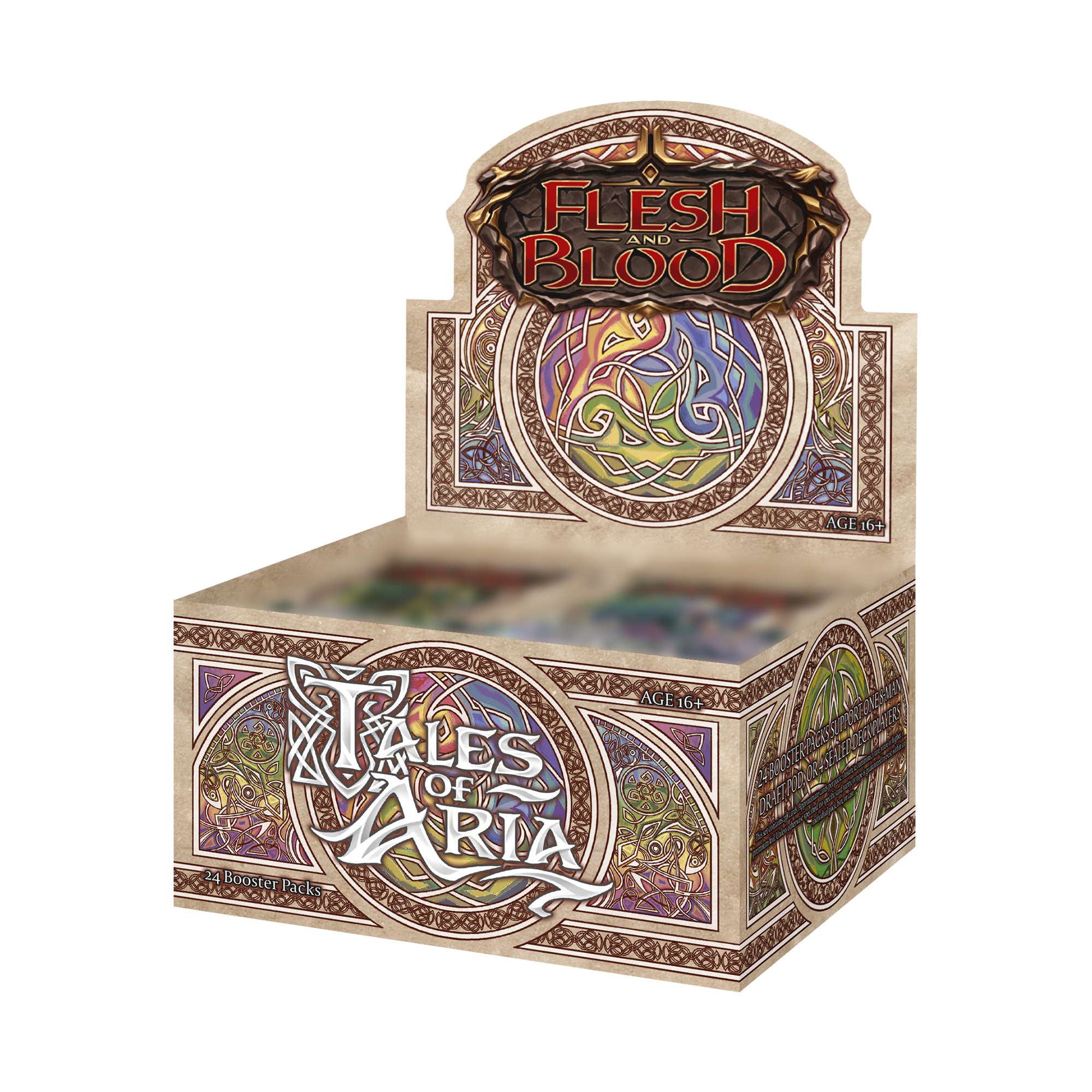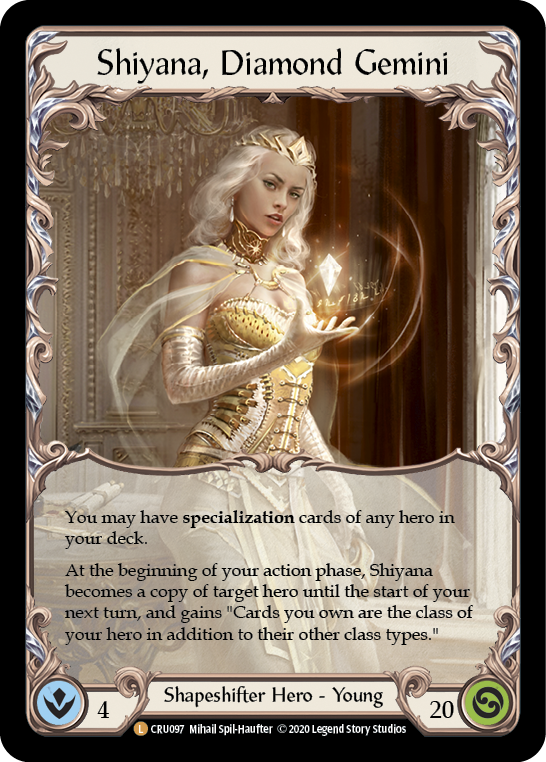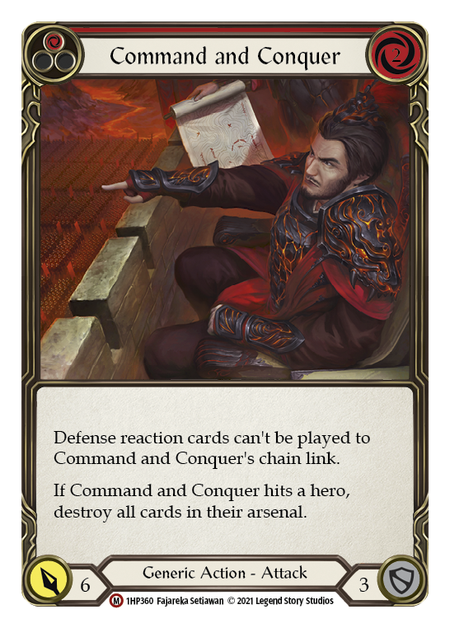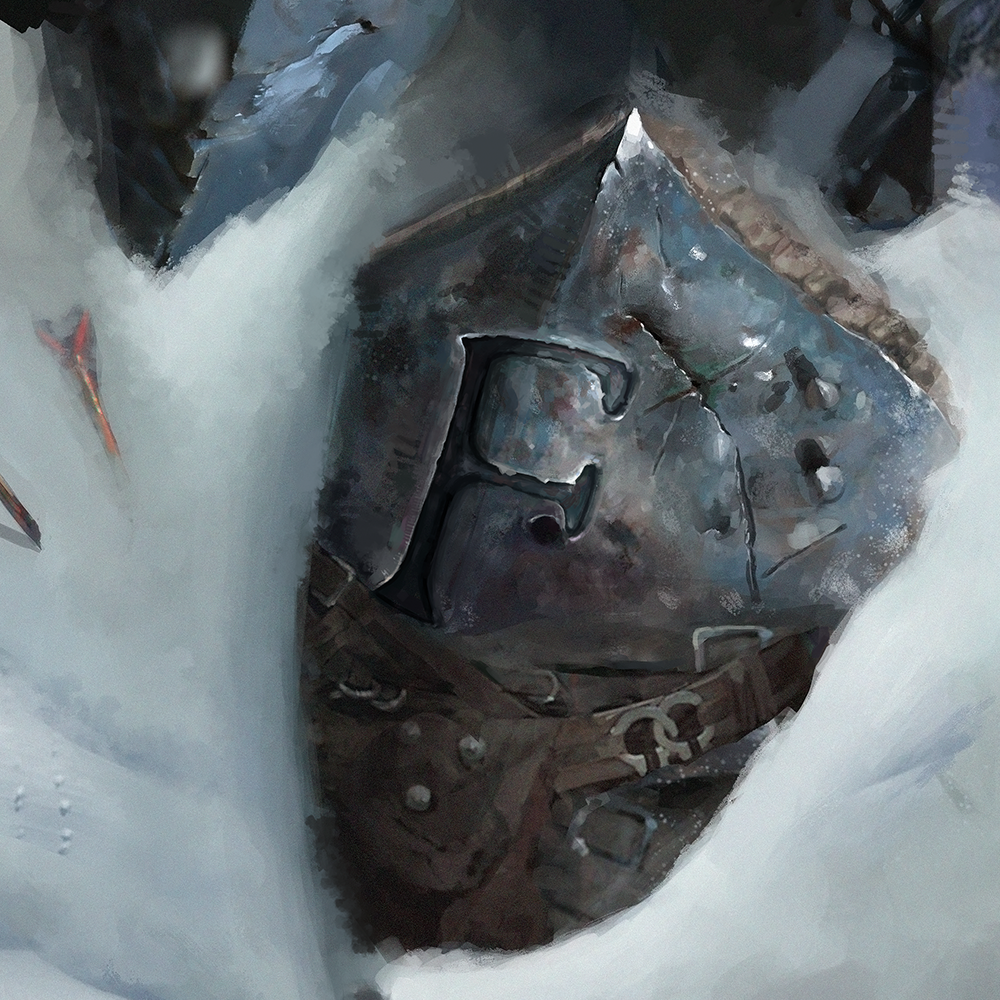We’ve returned to another relatively calm month for the FAB market, and I think we’re starting to see a bit of a pattern. Last month was a notably “active” month with Tales of Aria’s release; but immediately prior, the theme in July and August was the lack of big movements in the market.
Contrast this to last year around this time, where we were at the very beginning of a series of volatile market spikes that ran until a little before Monarch was released. During that time, we saw dramatic changes in the market regularly, and any given week felt like it could bring significant change!
Since then, the market has done a lot to stabilize, and we’re seeing movements concentrated around a few specific events: the release of new sets, play demand for singles needed for a newly popular deck, and the release of print run information. Going forward, these seem like the reliable events to focus your attention on.
That said, there could still be certain irregular events (like the proper announcement of a PvE format) that could shake things up. Still, it seems like the "$100 to $1000+" jumps are probably a thing of the past, and people need to reconfigure their Flesh and Blood brains for more gradual changes.
Tales of Aria's Potential Decline

The next notable market event should be the release of Tales of Aria unlimited over the next few weeks. First, the good news: first edition boxes of Tales of Aria continue to float around the $110-120 range, occasionally dipping above or below that line. (I don’t expect them to move down when unlimited drops, given the current price; unlike Monarch, these are not sitting at inflated values.)
ToA 1st should pick up a bit once the supply dries up as we move into 2022, and we could see a more significant bump when the actual print run numbers are released. The current price is low enough that even a larger-than-assumed print run probably won’t adversely affect their price, but a smaller-than-assumed run would give them a bump. To reiterate the theme of gradual changes, the payoff for holding TOA 1st is probably going to be a year plus before it’s worth the effort and associated fees that come with selling, so keep that in mind if you’re looking to get in on sealed boxes.
Now for the bad news.
I expect to see Tales singles take a beating pretty much across the board. As I’ve discussed in previous months both in my column here and in my writing elsewhere, we are increasingly seeing card values influenced more by actual play than abstract collectability. This is particularly true for sets from Monarch forward. Tales of Aria’s Legendaries are, on average, slightly more valuable than their CF Monarch counterparts ($188 vs $181), but all indications are that Tales of Aria’s print run is a fair bit larger than Monarch’s.
When unlimited RF Legendaries become available in the coming weeks, expect prices to drop as people who previously owned CFs and don’t care about owning the prestige version of a card look to downgrade to RFs plus cash. For context, the average cost of an RF unlimited L from Monarch is about $83, meaning people who downgrade can get about $100 out of the transaction (ignoring fees and shipping costs). If you want to buy a CF L, you should probably wait. Conversely, if you plan to sell one, you’re fast running out of time to do so before the probable dip.
I expect to see Tales singles take a beating pretty much across the board.
For all lower rarity singles, we should assume similar behavior to Monarch singles: all prices will move down, and first edition copies will maintain a very small premium over unlimited copies but will also be down from where they are today.
None of this is particularly worrying. It’s the pattern we should expect to see for as long as LSS maintains a split first edition/unlimited edition release structure. It also makes clear the approach that collectors should be adopting: wait until unlimited drops to buy pretty much anything as a single. As the community adapts to this cycle of price falls around unlimited, we may see some lower initial values as collectors and casual players adopt the “wait for unlimited” approach.
That said, we do have some weird cards that deserve special attention...
Non-Standard Rarities
It’s not really a catchy name, but I’m talking about the special cards LSS puts into sets. While the individual treatments vary, what they all have in common is that they have no clear pull rate upon release. This category includes things like full art Twinning Blade, alternate art cold foil Galaxxi Black, and, most recently, alternate art Channel Lake Frigid. (You can view the alternate art on FABDB by clicking the variant rarity codes in Printings, beneath the image.) These cards have a printed rarity (usually Majestic), but the variants clearly do not appear at the same frequency as other cards of the same printed rarity.
(As an aside, this sort of makes rarities less useful for the average player to wrap their head around and is especially bad for brand new players who, in the case of something like Channel Lake Frigid, could easily fail to realize they’ve opened a chase card.)
We only get a real idea of what the actual rarity of these cards is once the Collector's Centre information for a set is released, and even then we don’t get a lot of concrete information. For instance, the normal art rainbow foil version of Twinning Blade is described as appearing “50% as often as normal Majestics,” which is highly useful since it gives us sufficient information to easily calculate its pull rate. However, the full art version’s notes merely state “Only features in First Edition,” which doesn’t actually tell us much of anything about the frequency that full art version appears at. You could conclude that the normal version being 50% as common as other Majestics means that the full art version accounts for the other 50% (which would make both the variant and the normal version equally rare), but there’s no actual hard evidence that that’s the case.
We only get a real idea of what the actual rarity of these [variant] cards is once the Collector's Centre information for a set is released- and even then we don’t get a lot of concrete information.
I bring this up because these cards often get very hyped up by the community, and a lot of people make claims on exactly how rare they are with pretty tenuous evidence based mostly on their personal experience. I tend to see that the people who are most vocal about these being exceptionally rare also frequently have a vested interest in that claim being true: either they are trying to actively sell the cards in question, or they hold large inventories of FAB cards in general.
Functionally, no one opens the amount of boxes that you’d need in order to be able to make a really conclusive claim about rarity (we’re talking thousands of boxes). People naturally want to generalize from their experience, and opening 50 or even 250 boxes might make you feel like you’ve got a good handle on the pull rate of a particular card, but that’s not really true when you’re talking about cards that have exceptionally low pull rates.

As an example, a friend and I opened 54 total boxes of first edition Monarch between us. We each got three Great Libraries in our boxes. Let’s assume Fables appear at a rate of 1:30 (once again, we don’t actually know the true Fable pull rate, and the rates the community throws around as fact are actually speculative). Given that rate, my friend and I saw more than three times as many Great Libraries as we would expect to. Meanwhile, I know other people who opened 20-30 boxes and saw zero Great Libraries.
Because the community has a generally accepted sense of how rare a Fable is (somewhere in 1:30 to 1:40 boxes range), my friend and I immediately assumed we were quite lucky in our pulls. However, if we imagine that, instead of being a Fable, Great Library was a variant Majestic, we’d have no firm accepted rate to go on and would be much more likely to draw conclusions on rarity based on our observations.
This tendency is natural and, to a degree, all we can really do without info from LSS to go on. Still, we should always be vigilant to mentally distinguish between cards we have firm official rarities for (LSS stating that a normal Majestic appears 1:4 packs in Monarch) as opposed to cards whose rarity is speculative (some random person claiming “Channel Lake Frigid is incredibly rare, more so than a Legendary, trust me.”).
Personally, these sorts of cards make me nervous as collectibles. Because the information we get on them is incomplete, a lot of their demand seems to be driven by assumptions that the community is generating, and those assumptions seem to trend hard towards them being super rare. LSS could contradict this speculation at any time with future Collector’s Center updates, which could have a pronounced effect on the market.
This could go in either direction. There is also absolutely the possibility that LSS could release information proving these cards to be even rarer than people thought. But from where I stand, it feels like people are already pricing in some pretty extreme scarcity on these cards, and I feel like they’re more likely to be overestimating, rather than underestimating, just how scarce they are. In short, approach these sorts of cards with caution, and be exceptionally wary of anyone making a concrete claim on how rare they are without the ability to cite LSS to back up their claim.
Unlimited Doesn't Mean Forever

Aside from the Tales of Aria movement, one of the biggest stories of the month was LSS announcing that unlimited Crucible of War was out of print in one of the most succinct press releases of all time. The day of the announcement, we saw a TCGPlayer high sale of a $177 sealed box. Boxes had been selling fairly regular at or around MAP prior to the announcement, and in the weeks that have followed the spike, prices have receded to about $100. Chase singles behaved similarly to boxes in that same time period, with RF Shiyana going from $65 to nearly $350 and then back down to her current $145. So, unlimited boxes had a notable gain immediately after being declared OOP, but that spike was followed by a prompt retrace (and we’re still trending downward). When it all shakes out, I think prices for the sought after cards will likely remain above pre-OOP prices until we see future reprints.
Can we generalize from this? I’m hesitant to do so. As the game’s only supplemental set released so far, Crucible of War was an exceedingly weird set. The general impression that LSS gave was that they didn’t want to do an unlimited edition at all, but ultimately did so reluctantly after prices for singles spiked to levels that made competitive play inaccessible to a solid chunk of players. The set was also available for a much smaller window than any other unlimited set released so far. Until the Collector’s Center is updated, we won’t know what the print runs of unlimited sets look like in comparison, but Crucible will probably have a meaningfully smaller unlimited printing than any other set released thus far.
Can we generalize from Crucible Unlimited? I’m hesitant to do so.
With all of that in mind, you might consider picking up boxes or cases of Welcome to Rathe and Arcane Rising unlimited in the coming months, assuming you already wanted to own them. They’re about as cheap as they’re ever likely to get, and it does seem that they’ll go out of print at sooner or later. I would particularly recommend picking them up if you think you’ll want to open them to play sealed or draft in the future.


I wouldn’t personally recommend trying to mess around with flipping singles into an OOP announcement for these sets because the sought-after Majestics of these sets (Enlightened Strike, Command and Conquer, etc.) seem very likely to be reprinted. LSS is aware that they’re currently a barrier for entry to a lot of decks, and taking WTR/ARC out of print without also providing new copies of these cards would exacerbate the problem. It strikes me as plausible that they may announce that these staples will be available in an upcoming set before announcing the retirement of WTR/ARC, so as to avoid spiking the secondary market. The last thing the game needs from a playability perspective is $200 unlimited Command and Conquer.
Final Thoughts
From where I sit, the game continues to be a success. I’ve seen a fair bit of negativity in the financial end of the community, and some people are tossing around the word “stagnation,” but I tend disagree with that assessment. People got far too used to the wild rise to prominence of the game in late 2020 to early 2021, and some of them apparently held the unreasonably high expectation that it would be all up forever.
As we move forward into the game’s stable period, the ways that people will make money off it are going to change. Flipping will increasingly require more active engagement with the game, and investments will take longer to yield noteworthy returns.
Instead of just seeing entire classes of cards spike across the board (like cold foils did for the boom period), spikes are more likely to be focused on specific individual cards that suddenly become useful in the wake of new releases. For example, Levia turned out to be kind of a flop from a competitive standpoint- but if, in some future set, LSS decides to revisit Shadow Brute, we might see a card like cold foil Hooves of the Shadowbeast spike abruptly.
Flesh and Blood’s market is becoming a bit more predictable as it matures. That means that it will be less likely to see meteoric spikes.
Flesh and Blood’s market is becoming a bit more predictable as it matures. That means that it will be less likely to see meteoric spikes. If that’s the sort of action you’re chasing, it might be time to turn your attention towards a newer game. In doing so you’ll be taking on more risk, but if you really want to gamble on massive short term returns, you’re unlikely to find them in FAB going forward.
For the more long term minded people, we’re still in the early days of the game; and if it does continue to grow its player base in the coming years, current print runs will look a fair bit smaller in a future context than they do right now. Even though “Monarch to 1k” turned out to be more than a bit premature, it doesn’t mean that it’s never going to happen; it might just take years as opposed to the months that the #wall-street crew had banked on.
Late Breaking News!
So, right about the time I was going to submit this piece to my editor, I got some important news that absolutely needs to be covered here.
Channel Fireball has listed cases of first edition Tales of Aria for $330 via their new Card Shop Live platform (Card Shop Live is listed as the seller, so these are CFB's boxes). That comes out to $82.5 a box, which is a stark contrast to the $110-115 boxes are going for elsewhere. CFB is listing individual boxes at $110 still.
So what to make of this? Unfortunately, we won’t have a detailed picture of what’s going on here until we get a chance to observe the market’s reaction. I will do some speculation though...
Combined with the recent emergence of significant stocks of first edition Monarch (in once instance, Team Covenant dumped a large quantity of cases at $800, which took quite a while to sell through), I am inclined to believe that many retailers held back significant amounts of first edition product, potentially as a long term investment and/or to run events. However, the shift to moving product at sub-market prices makes me think that most of these stores do not believe we’ll see significant gains on sealed product in the short term.
That isn’t a reason to be worried per say- stores generally want to cycle inventory as opposed to holding long term- but it does make me think that perhaps print runs of both first edition Monarch and Tales of Aria are a bit larger than previously thought.
We’ll have to see how much more product emerges in the coming weeks. That said, if I wasn’t already holding the amount of TOA I want, $330 is a very tempting price to buy in at (though I wouldn’t open them at that price, with unlimited poised to kneecap singles prices).





